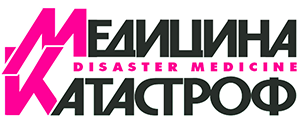Гордон А.Ю. Здоровье людей – приоритет политики ООН по снижению риска стихийных бедствий
УДК 614.8:614.2
С. 47–51
Страновой офис Всемирной организации здравоохранения в Республике Казахстан, Астана, Республика Казахстан
Представлен краткий обзор наиболее значимых документов ООН по вопросам уменьшения риска стихийных бедствий (бедствия), принятых за последние 30 лет. Проанализированы основные положения Сендайской декларации и Сендайской рамочной программы ООН по снижению риска бедствий на 2015–2030 гг. с акцентом на положения, отражающие различные аспекты защиты жизни и здоровья людей в чрезвычайных ситуациях (ЧС).
Ключевые слова: документы ООН по вопросам снижения риска бедствий, жизнь и здоровье людей, Сендайская декларация, Сендайская рамочная программа ООН по снижению риска бедствий, стихийные бедствия (бедствия), чрезвычайные ситуации
СПИСОК ДОКУМЕНТОВ ООН
1. UNISDR. Disaster impacts / 2000–2012.http://www.preventionweb.net/files/31737_20130312disaster20002012copy.pdf.
2. International Decade for Natural Disaster Reduction, UN General Assembly, 85th plenary meeting, Resolution A/RES/44/236, 22 December 1989, http://www.un.org/documents/ga/res/44/a44r236.htm.
3. Yokohama Strategy and Plan of Action, Guidelines for Natural Disaster Prevention, Preparedness and Mitigation,https://www.unisdr.org/we/inform/publications/8241.
4. IDNDR Programme Forum, Geneva, July 1999 http://www.fire.uni-freiburg.de/iffn/org/idndr/idndr_1.htm.
5. International Decade for Natural Disaster Reduction: successor arrangements, UN General Assembly, Session 54, Resolution A/RES/54/219, 22 December 1999, http://www.unisdr.org/files/resolutions/N0027175.pdf .
6. International Strategy for Disaster Reduction,UN General Assembly, Session 56, Resolution A/RES/56/195, 21 December 2001, http://www.unisdr.org/files/resolutions/N0149261.pdf .
7. Hyogo Framework for Action 2005–2015: Building the Resilience of Nations and Communities to Disasters,http://www.unisdr.org/files/1037_hyogoframeworkforactionenglish.pdf..
8. Sendai Declaration and Framework for Disaster Risk Reduction 2015–2030, UN General Assembly, 92nd plenary meeting, Resolution A/RES/ 69/283, 3 June2015, http://www.unisdr.org/files/resolutions/N1516716.pdf.
9. Putting people’s health at the centre of emergency and disaster risk management,
http://www.who.int/hac/techguidance/preparedness/policy_and_strategies/en.
10. Global health and foreign policy: strengthening the management of international health crises, UN General Assembly, 80th plenary meeting, Resolution A/RES/70/183, 17 December 2015, http://www.un.org/en/ga/search/view_doc.asp?symbol=A/RES/70/183&referer=http://www.un.org/en/ga/70/resolutions.shtml&Lang=E
11. Bangkok Principles for the implementation of the health aspects of the Sendai Framework for Disaster Risk Reduction 2015–2030, http://www.unisdr.org/files/47606_bangkokprinciplesfortheimplementati.pdf
Gordon A.Yu. Public Health as UN Policy Priority in Reducing the Risk of Disasters
UDK 614.8:614.2
PP. 47–51
WHO Country Office in the Republic of Khazakhstan, Astana, Republic of Khazakhstan
A brief overview of the most significant UN documents on natural disaster risk reduction adopted over the past 30 years is presented. The main provisions of the Sendai Declaration and the Sendai Framework for Disaster Risk Reduction for 2015–2030 are analyzed with an emphasis on provisions reflecting various aspects of the protection of life and health of people in emergency situations.
Keywords: emergencies, human life, natural disasters (disasters), public health, Sendai Declaration, Sendai Framework for Disaster Risk Reduction, UN documents on disaster risk reduction
REFERENCES
1. UNISDR. Disaster impacts / 2000–2012.http://www.preventionweb.net/files/31737_20130312disaster20002012copy.pdf.
2. International Decade for Natural Disaster Reduction, UN General Assembly, 85th plenary meeting, Resolution A/RES/44/236, 22 December 1989, http://www.un.org/documents/ga/res/44/a44r236.htm.
3. Yokohama Strategy and Plan of Action, Guidelines for Natural Disaster Prevention, Preparedness and Mitigation,https://www.unisdr.org/we/inform/publications/8241.
4. IDNDR Programme Forum, Geneva, July 1999 http://www.fire.uni-freiburg.de/iffn/org/idndr/idndr_1.htm.
5. International Decade for Natural Disaster Reduction: successor arrangements, UN General Assembly, Session 54, Resolution A/RES/54/219, 22 December 1999, http://www.unisdr.org/files/resolutions/N0027175.pdf .
6. International Strategy for Disaster Reduction,UN General Assembly, Session 56, Resolution A/RES/56/195, 21 December 2001, http://www.unisdr.org/files/resolutions/N0149261.pdf .
7. Hyogo Framework for Action 2005–2015: Building the Resilience of Nations and Communities to Disasters,http://www.unisdr.org/files/1037_hyogoframeworkforactionenglish.pdf..
8. Sendai Declaration and Framework for Disaster Risk Reduction 2015–2030, UN General Assembly, 92nd plenary meeting, Resolution A/RES/ 69/283, 3 June2015, http://www.unisdr.org/files/resolutions/N1516716.pdf.
9. Putting people’s health at the centre of emergency and disaster risk management,
http://www.who.int/hac/techguidance/preparedness/policy_and_strategies/en.
10. Global health and foreign policy: strengthening the management of international health crises, UN General Assembly, 80th plenary meeting, Resolution A/RES/70/183, 17 December 2015, http://www.un.org/en/ga/search/view_doc.asp?symbol=A/RES/70/183&referer=http://www.un.org/en/ga/70/resolutions.shtml&Lang=E
11. Bangkok Principles for the implementation of the health aspects of the Sendai Framework for Disaster Risk Reduction 2015–2030, http://www.unisdr.org/files/47606_bangkokprinciplesfortheimplementati.pdf
